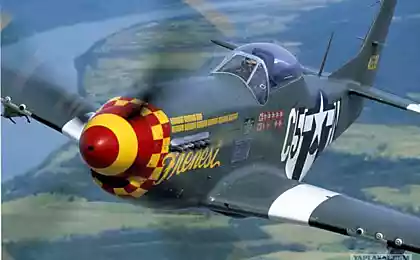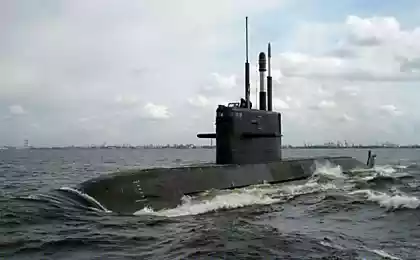1087
7 best submarines of World
Submarines dictate the rules in the sea war and make all meekly observe routine.
Those stubborn that venture to neglect the rules of the game, expect a quick and painful death in Chillmere water, in the midst of floating debris and oil stains. Boats, regardless of the flag remains a dangerous war machines, able to crush any opponent.
I offer you a small story about the most successful projects of the seven submarines of the war years.
16 photo + a lot of text here
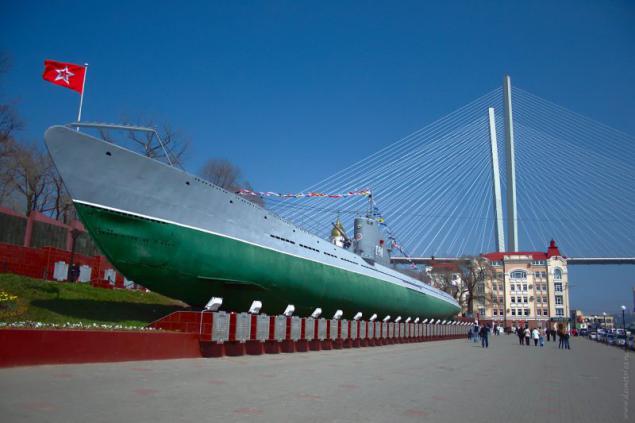
Boats of T (Triton-class), United Kingdom
Number built submarines - 53.
Displacement above water - 1 290 tonnes; Scuba - 1560 tons.
The crew - 59 ... 61 people.
Operating depth - 90 m (riveted building), 106 m (welded housing).
Full speed on the surface - 15, 5 knots; submerged - 9 knots.
131 tons of fuel reserves provided a cruising range on the surface of 8,000 miles.
Armament:
- 11 torpedo tubes caliber of 533 mm (boating subseries II and III), ammunition - 17 torpedoes;
- 1 x 102 mm universal tool, 1 x 20 mm anti-aircraft "Oerlikon».
British underwater Terminator that can "knock the nonsense" of the head of any enemy using nasal 8-torpedo salvo. Boat type "T" has not been equal in destructive power of all submarines WWII period - this is due to their fierce appearance with fancy bow superstructure where to place additional torpedo tubes.
The notorious British conservatism was in the past - the British were the first to equip their boat sonar ASDIC. Alas, despite their powerful weapons and modern means of detection, high-seas boat type "T" has not become the most effective among the British World War II submarine. However, they have been a spectacular battle your way and have achieved a number of remarkable victories. "Triton" is actively used in the Atlantic, in the Mediterranean Sea, the Japanese attacked the communication in the Pacific several times noted in the Icy Arctic waters.
In August 1941 the submarine arrived in Murmansk "Taygris" and "Trident". British submariners showed a master class his Soviet colleagues, for two campaigns were sunk four enemy ship, including "Bahia Laura" and "Donau II» with thousands of soldiers of the 2nd Mountain Division. Thus, the sailors prevented a third German offensive on the Murmansk.
Among other famous trophy boat type "T" number of German light cruiser "Karlsruhe" and the Japanese heavy cruiser "Ashigaru". Samurai "lucky" to get acquainted with the full 8-submarine torpedo salvo "Trenchent" - received 4 torpedoes aboard (+ more one of fodder TA), the cruiser quickly capsized and sank.
After the war, the powerful and sophisticated "Triton" a quarter of a century were in service with the Royal Navy.
It is noteworthy that the three boats of this type in the late 1960s, Israel has acquired - one of them, INS Dakar (ex. HMS Totem) died in 1968 in the Mediterranean Sea under mysterious circumstances.

Boats like "Cruising" Series XIV, the Soviet Union
Number built submarines - 11.
Displacement above water - 1,500 tonnes; Scuba - 2100 tons.
The crew - 62 ... 65 people.
Operating depth - 80 m, the maximum - 100 m.
Full speed on the surface - 22, 5 kt .; underwater - 10 kt.
Cruising range on the surface of 16,500 miles (9 kt.)
Cruising range submerged - 175 miles (3 kt.)
Armament:
- 10 torpedo tubes caliber of 533 mm ammunition - 24 torpedoes;
- 2 x 100 mm universal guns, 2 x 45 mm anti-aircraft semiautomatic;
- Up to 20 m boom.
... December 3rd, 1941 German hunters UJ-1708, UJ-1416 and UJ-1403 threw bombs Soviet boat attempted to attack the convoy from Bustad-Sund.
- Hans, you hear this thing?
- Nine. After a series of explosions Russian lay on the bottom - I spotted three hits on the ground ...
- Can you identify where they are now?
- Donnervetter! They are blown. Surely emerge and decided to surrender.
German sailors were wrong. From the depths of the sea to the surface rose monsters - cruising submarine K-3 Series XIV, unleashed on protivnikashkval artillery fire. From the fifth salvo Soviet sailors managed to sink the U-1708. The second hunter, received two direct hits, puffed and turned away - his 20 mm anti-aircraft guns could not compete with the "one-hundredths" secular submarine. Scattered Germans as puppies, K-3 quickly disappeared over the horizon in the course of the 20-node.
Soviet "Katyusha" was phenomenal boat for its time. Welded body, powerful artillery and mine-torpedo weapons, powerful diesel engines (2 x 4,200 hp!), High surface speed 22-23 knots. The great autonomy of fuel supplies. Remote control valves of the ballast tanks. The station is capable of transmitting signals from the Baltic Sea to the Far East. Exceptional level of comfort: showers, refrigerated tanks, two seawater desalination, elektrokambuz ... Two boats (K-3 and K-22) were equipped with sonar lend-lease ASDIC.

But, oddly enough, neither high performance nor powerful weapons have not done "Katyusha" effective weapon - in addition to the dark history of the attack K-21 to the "Tirpitz" during the war in the boat XIV series accounts for only 5 successful torpedo attacks and 27 thousand Bro. Reg. tons of tonnage sunk. Most of the victory was won with the help of the exhibited min. Moreover, their own losses amounted to five cruise boats.
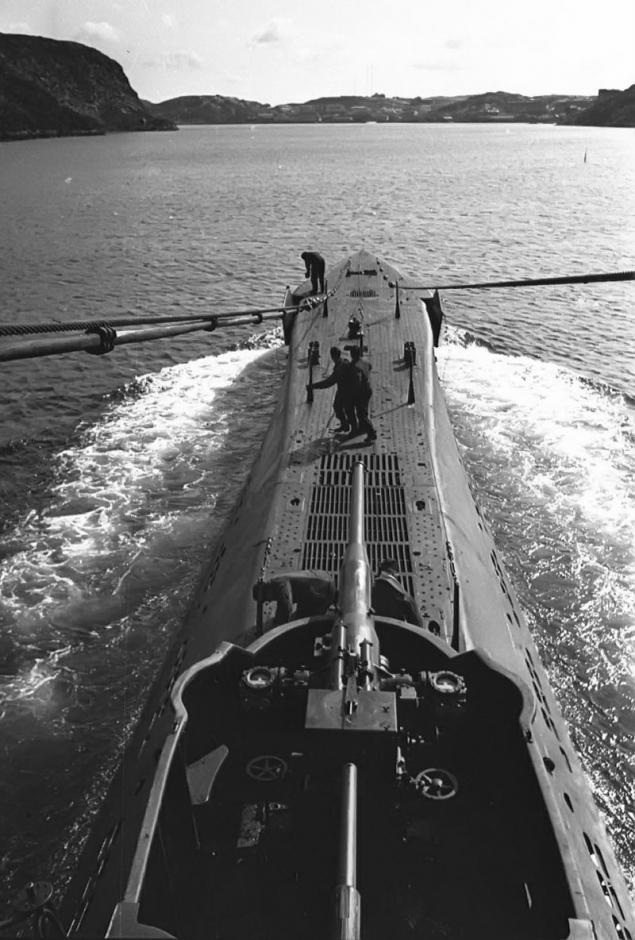
The reasons for failure lie in the tactics of "Katyusha" - a powerful submarine created for expanses of the Pacific Ocean, had to "mark time" in the shallow Baltic "puddle." When operating at depths of 30-40 meters a huge 97-meter boat could hit his nose on the ground, while its food still stuck on the surface. Slightly lighter sailors had Severomorsk - experience has shown that the effectiveness of combat employment of "Katyusha" was complicated by poor training of personnel and lack of initiative command.
It's a pity. These boats had hoped for more.
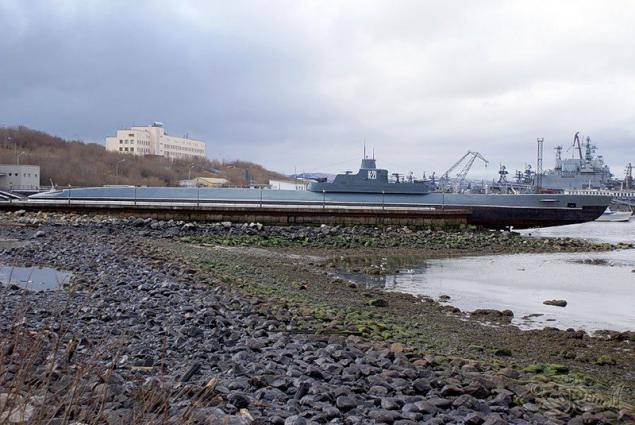
"Baby", the Soviet Union
Series VI and VI-bis - built 50.
Series XII - built 46.
Series XV - 57 built (in the fighting participated 4).
TTX boat type M Series XII:
Displacement above water - 206 tons; Scuba - 258 tons.
Autonomy - 10 days.
Operating depth - 50 m, maximum - 60 m.
Full speed on the surface - 14 kt .; underwater - 8 bonds.
Cruising range on the surface - 3380 miles (8, 6 knots).
Cruising range submerged - 108 miles (3 knots).
Armament:
- 2 torpedo tubes caliber of 533 mm ammunition - 2 torpedoes;
- 1 x 45 mm anti-aircraft semiautomatic.
The project is a mini-submarine to quickly gain the Pacific fleet - the main feature of the M boats began to be transported on the M / A fully assembled.
In pursuit of compactness had to sacrifice a lot - in the service of "Baby" has become a grueling and dangerous event. Hard living conditions, a strong "buffeting" - waves mercilessly threw 200-ton "float", risking to break it apart. Shallow depth of immersion and a weak weapon. But the main concern was the reliability of the submarine sailors - one shaft, one diesel, one electric motor - a tiny "Baby" does not leave chances careless crew on board the slightest fault threatened death to the submarine.
Kids quickly evolved - performance characteristics of each new series of at times different from the previous project: improved contours, and updated electrical detection, reduce the time immersion growing autonomy. "Baby" XV series is in no way resembled their predecessors VI and XII series: polutorakorpusnaya design - the ballast tanks were made outside the hull; GEM received the standard two-shaft arrangement with two diesel engines and electric motors submerged speed. Number of torpedo tubes increased to four. Alas, the series XV came too late - the brunt of the war bore the "Baby» VI and XII series.
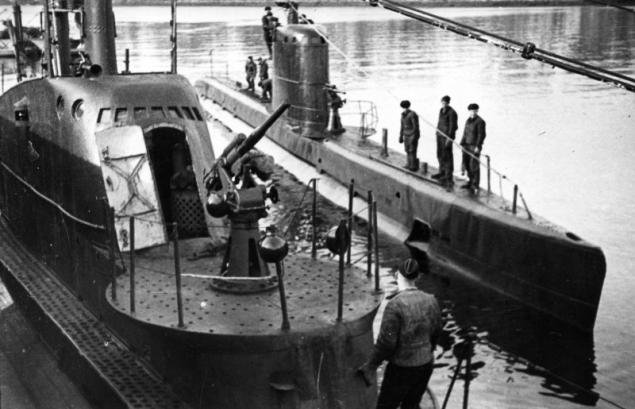
Despite its modest size, and only 2 torpedoes on board, the tiny fish differed simply appalling "voracity": all the years of World War II, Soviet submarine Type M sank 61 Ships enemy total tonnage of 135, 5000 grt, destroyed 10 warships and damaged 8 transports.
Baby, originally intended only for actions in the coastal zone, effectively learned to fight in the open sea areas. They are on a par with larger boats cut enemy communications, patrolling near the exit of enemy bases and fjords, deftly overcome barriers and undermining anti transports right at the piers of the enemy inside the protected harbor. It's amazing how sailors were able to fight on these rickety little boats! But they fought. And won!
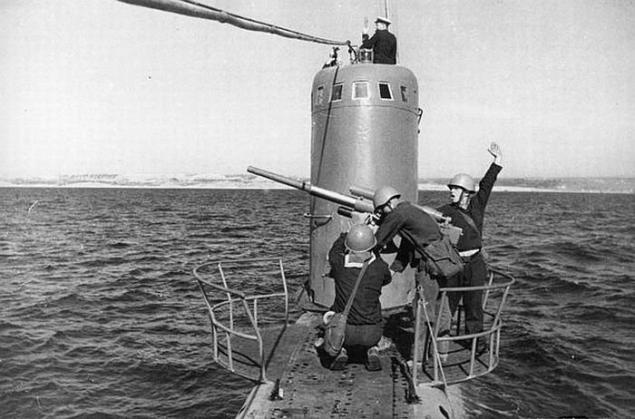
Boats of the "average" series IX-bis, the Soviet Union
Number built submarines - 41.
Displacement above water - 840 tons; Scuba - 1070 tons.
The crew - 36 ... 46 people.
Operating depth - 80 m, the maximum - 100 m.
Full speed on the surface - 19, 5 knots; submerged - 8 of 8 knots.
Cruising range on the surface of 8,000 miles (10 knots).
Cruising range submerged 148 miles (3 knots).
"Six torpedo tubes and as many spare torpedoes at convenient recharging racks. Two guns with more ammunition, machine guns, disruptive property ... In a word, than to fight there. A 20-node surface speed! It allows you to outrun almost any convoy and attack it again. Technology is good ... »
- The opinion of the commander of S-56, the Hero of the Soviet Union G. Shchedrin
"Eski" differed rational layout and a balanced design, powerful weapons, excellent running and seaworthy. Originally a German design firm "Deschimag" modified under Soviet demands. But do not hurry to clap and remember "Mistral". After the start of serial construction Series IX in Soviet shipyards, the German project was revised to a full transition to the Soviet equipment: diesel 1D, weapons, radios, hydrophone gyro ... - boat under the designation "Series IX-bis", there was no Bolt foreign production!

Problems of combat use of the boats of the "average" as a whole, were similar to cruising boats of K - locked on mine-infested shallows, they have not been able to realize their fighting qualities. Much better was the case in the Northern Fleet - in the war boat C-56 under the command of GI Shchedrin made the transition across the Pacific and Atlantic oceans, going from Vladivostok to Polar, later becoming the most productive of the Soviet Navy boat.
No less fantastic story connected with "bomboulavlivatelem" C-101 - during the war by the Germans on the boat and allies were dropped depth charges over 1000, but each time C-101 safely returned to the Arctic.
Finally, it was the C-13 made his famous victories Alexander Marinesco.
"Severe alterations, which gets the ship, bombings and explosions, depth, far exceeding the official limit. From the boat to protect us ... »
- Memories of GI Shchedrin

Boats such as Gato, US
Number built submarines - 77.
Displacement above water - 1 525 tonnes; Scuba - 2420 tons.
The crew - 60 people.
Operating depth - 90 m.
Full speed on the surface - 21 kt .; submerged - 9 kt.
Cruising range on the surface of 11 000 miles (10 kt.).
Cruising range submerged 96 miles (2 bonds.).
Armament:
- 10 torpedo tubes caliber of 533 mm ammunition - 24 torpedoes;
- 1 x 76 mm universal tool, 1 x 40 mm anti-aircraft machine gun "Bofors", 1 x 20 mm "Oerlikon»;
- One of the boats - USS Barb was equipped with multiple rocket launchers to bombard the coast.
Ocean-going submarine type "Getou" appeared in the midst of the Pacific War and became one of the most effective tools for the US Navy. They firmly blocked all strategic straits and approaches to the atolls, cut all the supply lines, leaving the Japanese garrisons without reinforcements, and Japanese industry - without raw materials and oil. In battles with "Getou" Imperial Navy lost two heavy aircraft carriers, has lost four cruisers and destroyers baker's dozen.
High speed, lethal torpedoes, the most modern means of detecting enemy radio - radar, direction finder, sonar. Cruising range, providing combat patrols off the coast of Japan, under the action of a base in Hawaii. Increased comfort on board. But most importantly - a great crew training and the weakness of the Japanese anti-submarine equipment. As a result, "Getou" ruthlessly crushing everything - they brought out the blue of the deep sea victory in the Pacific.

... One of the main achievements of the boats' Getou "change the world, the event is considered to September 2, 1944 On the day the submarine" Finbek "spotted distress signal from the plane of the incident and, after hours of searching, found in the ocean scared and already desperate pilots . It turned out to be the salvation of one George Herbert Bush.

List of trophies "Flasher" sounds like a bunker anecdote: 9 tankers, transports 10, 2 patrol boats total tonnage of 100,231 GRT! A snack on the boat picked up a Japanese cruiser and destroyer. Lucky devil!
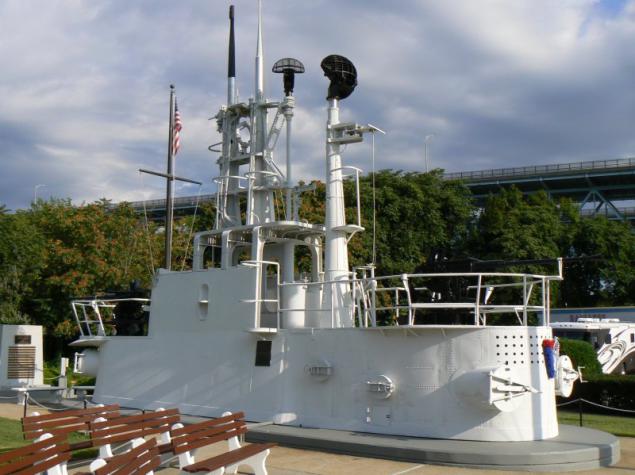
Elektroboty Type XXI, Germany
By April 1945 the Germans had launched the 118 series submarines XXI. However, only two of them were able to achieve operational readiness and out to sea in the last days of the war.
Displacement above water - 1 620 tonnes; Scuba - 1820 tons.
The crew - 57 people.
Operating depth - 135 m, maximum - 200+ meters.
Full speed on the surface - 15, 6 knots., Submerged - 17 kt.
Cruising range on the surface 15 500 miles (10 kt.).
Cruising range submerged 340 miles (5 kt.).
Armament:
- 6 torpedo tubes caliber of 533 mm ammunition - 17 torpedoes;
- 2 anti-aircraft machine "Flak" caliber 20 mm.
Our allies firmly lucky that all German forces were sent to the Eastern Front - Fritz did not have the resources to release a flock of sea fantasy "Elektrolodok." They appeared a year earlier - and all kaput! Another turning point in the Battle of the Atlantic.
The Germans guessed it first: all the hallmarks shipbuilders in other countries - large ammunition, powerful artillery, high surface speed 20+ knots - is of little value. The key parameters that determine the combat effectiveness of submarines, - its speed and power reserve submerged.
Unlike his peers, "Eletrobot" was aimed at finding a permanent under water: the most streamlined body without heavy artillery, fencing and platforms - all for the sake of minimizing the underwater drag. Snorkel, six groups of batteries (3 times more than conventional boats!), Powerful e-mail. engines full speed, quiet and economical e-mail. engines "sneak."

The Germans figured out everything - the whole campaign "Elektrobot" moving at periscope depth under the RDP, trudnoobnaruzhimym remaining funds for anti-enemy. The large depth of his advantage becomes even more shocking: 2-3 times more power reserve at twice the speed than any of the submarine war years! High and impressive underwater stealth skills, homing torpedoes, a complex of sophisticated detection ... "Elektroboty" opened a new milestone in the history of the submarine fleet, to determine the vector of development of submarines in the postwar years.
The Allies were not prepared to meet such a threat - as shown by the post-war trials "Elektroboty" several times greater than the mutual distance of the sonar detection American and British destroyers guarding convoys.

Boat type VII, Germany
Number built submarines - 703.
Displacement above water - 769 tons; Scuba - 871 ton.
The crew - 45 people.
Operating depth - 100 m, the maximum - 220 meters
Full speed on the surface - 17, 7 ties .; submerged - 7, 6 ties.
Cruising range on the surface 8500 miles (10 kt.).
Cruising range submerged 80 miles (4 bonds.).
Armament:
- 5 torpedo tubes caliber of 533 mm ammunition - 14 torpedoes;
- 1 x 88 mm universal tool (until 1942), eight options Add-ins with 20 and 37 mm anti-aircraft guns.
* The performance characteristics correspond to the boats subseries VIIC
The most effective of all the warships ever to roam the world's ocean.
Relatively simple, low-cost, mass, but perfectly armed and deadly tool for total underwater terror.
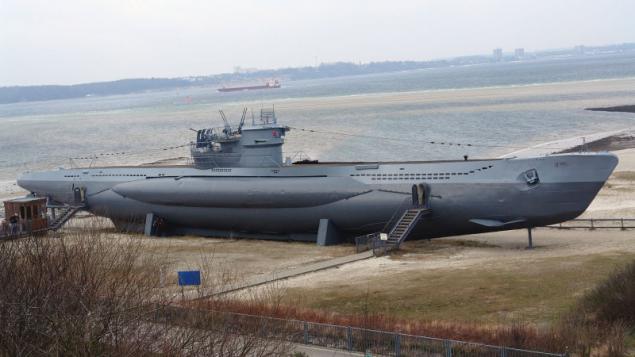
703 submarines. 10 million tons of tonnage sunk!
Source:
Those stubborn that venture to neglect the rules of the game, expect a quick and painful death in Chillmere water, in the midst of floating debris and oil stains. Boats, regardless of the flag remains a dangerous war machines, able to crush any opponent.
I offer you a small story about the most successful projects of the seven submarines of the war years.
16 photo + a lot of text here

Boats of T (Triton-class), United Kingdom
Number built submarines - 53.
Displacement above water - 1 290 tonnes; Scuba - 1560 tons.
The crew - 59 ... 61 people.
Operating depth - 90 m (riveted building), 106 m (welded housing).
Full speed on the surface - 15, 5 knots; submerged - 9 knots.
131 tons of fuel reserves provided a cruising range on the surface of 8,000 miles.
Armament:
- 11 torpedo tubes caliber of 533 mm (boating subseries II and III), ammunition - 17 torpedoes;
- 1 x 102 mm universal tool, 1 x 20 mm anti-aircraft "Oerlikon».
British underwater Terminator that can "knock the nonsense" of the head of any enemy using nasal 8-torpedo salvo. Boat type "T" has not been equal in destructive power of all submarines WWII period - this is due to their fierce appearance with fancy bow superstructure where to place additional torpedo tubes.
The notorious British conservatism was in the past - the British were the first to equip their boat sonar ASDIC. Alas, despite their powerful weapons and modern means of detection, high-seas boat type "T" has not become the most effective among the British World War II submarine. However, they have been a spectacular battle your way and have achieved a number of remarkable victories. "Triton" is actively used in the Atlantic, in the Mediterranean Sea, the Japanese attacked the communication in the Pacific several times noted in the Icy Arctic waters.
In August 1941 the submarine arrived in Murmansk "Taygris" and "Trident". British submariners showed a master class his Soviet colleagues, for two campaigns were sunk four enemy ship, including "Bahia Laura" and "Donau II» with thousands of soldiers of the 2nd Mountain Division. Thus, the sailors prevented a third German offensive on the Murmansk.
Among other famous trophy boat type "T" number of German light cruiser "Karlsruhe" and the Japanese heavy cruiser "Ashigaru". Samurai "lucky" to get acquainted with the full 8-submarine torpedo salvo "Trenchent" - received 4 torpedoes aboard (+ more one of fodder TA), the cruiser quickly capsized and sank.
After the war, the powerful and sophisticated "Triton" a quarter of a century were in service with the Royal Navy.
It is noteworthy that the three boats of this type in the late 1960s, Israel has acquired - one of them, INS Dakar (ex. HMS Totem) died in 1968 in the Mediterranean Sea under mysterious circumstances.

Boats like "Cruising" Series XIV, the Soviet Union
Number built submarines - 11.
Displacement above water - 1,500 tonnes; Scuba - 2100 tons.
The crew - 62 ... 65 people.
Operating depth - 80 m, the maximum - 100 m.
Full speed on the surface - 22, 5 kt .; underwater - 10 kt.
Cruising range on the surface of 16,500 miles (9 kt.)
Cruising range submerged - 175 miles (3 kt.)
Armament:
- 10 torpedo tubes caliber of 533 mm ammunition - 24 torpedoes;
- 2 x 100 mm universal guns, 2 x 45 mm anti-aircraft semiautomatic;
- Up to 20 m boom.
... December 3rd, 1941 German hunters UJ-1708, UJ-1416 and UJ-1403 threw bombs Soviet boat attempted to attack the convoy from Bustad-Sund.
- Hans, you hear this thing?
- Nine. After a series of explosions Russian lay on the bottom - I spotted three hits on the ground ...
- Can you identify where they are now?
- Donnervetter! They are blown. Surely emerge and decided to surrender.
German sailors were wrong. From the depths of the sea to the surface rose monsters - cruising submarine K-3 Series XIV, unleashed on protivnikashkval artillery fire. From the fifth salvo Soviet sailors managed to sink the U-1708. The second hunter, received two direct hits, puffed and turned away - his 20 mm anti-aircraft guns could not compete with the "one-hundredths" secular submarine. Scattered Germans as puppies, K-3 quickly disappeared over the horizon in the course of the 20-node.
Soviet "Katyusha" was phenomenal boat for its time. Welded body, powerful artillery and mine-torpedo weapons, powerful diesel engines (2 x 4,200 hp!), High surface speed 22-23 knots. The great autonomy of fuel supplies. Remote control valves of the ballast tanks. The station is capable of transmitting signals from the Baltic Sea to the Far East. Exceptional level of comfort: showers, refrigerated tanks, two seawater desalination, elektrokambuz ... Two boats (K-3 and K-22) were equipped with sonar lend-lease ASDIC.

But, oddly enough, neither high performance nor powerful weapons have not done "Katyusha" effective weapon - in addition to the dark history of the attack K-21 to the "Tirpitz" during the war in the boat XIV series accounts for only 5 successful torpedo attacks and 27 thousand Bro. Reg. tons of tonnage sunk. Most of the victory was won with the help of the exhibited min. Moreover, their own losses amounted to five cruise boats.

The reasons for failure lie in the tactics of "Katyusha" - a powerful submarine created for expanses of the Pacific Ocean, had to "mark time" in the shallow Baltic "puddle." When operating at depths of 30-40 meters a huge 97-meter boat could hit his nose on the ground, while its food still stuck on the surface. Slightly lighter sailors had Severomorsk - experience has shown that the effectiveness of combat employment of "Katyusha" was complicated by poor training of personnel and lack of initiative command.
It's a pity. These boats had hoped for more.

"Baby", the Soviet Union
Series VI and VI-bis - built 50.
Series XII - built 46.
Series XV - 57 built (in the fighting participated 4).
TTX boat type M Series XII:
Displacement above water - 206 tons; Scuba - 258 tons.
Autonomy - 10 days.
Operating depth - 50 m, maximum - 60 m.
Full speed on the surface - 14 kt .; underwater - 8 bonds.
Cruising range on the surface - 3380 miles (8, 6 knots).
Cruising range submerged - 108 miles (3 knots).
Armament:
- 2 torpedo tubes caliber of 533 mm ammunition - 2 torpedoes;
- 1 x 45 mm anti-aircraft semiautomatic.
The project is a mini-submarine to quickly gain the Pacific fleet - the main feature of the M boats began to be transported on the M / A fully assembled.
In pursuit of compactness had to sacrifice a lot - in the service of "Baby" has become a grueling and dangerous event. Hard living conditions, a strong "buffeting" - waves mercilessly threw 200-ton "float", risking to break it apart. Shallow depth of immersion and a weak weapon. But the main concern was the reliability of the submarine sailors - one shaft, one diesel, one electric motor - a tiny "Baby" does not leave chances careless crew on board the slightest fault threatened death to the submarine.
Kids quickly evolved - performance characteristics of each new series of at times different from the previous project: improved contours, and updated electrical detection, reduce the time immersion growing autonomy. "Baby" XV series is in no way resembled their predecessors VI and XII series: polutorakorpusnaya design - the ballast tanks were made outside the hull; GEM received the standard two-shaft arrangement with two diesel engines and electric motors submerged speed. Number of torpedo tubes increased to four. Alas, the series XV came too late - the brunt of the war bore the "Baby» VI and XII series.

Despite its modest size, and only 2 torpedoes on board, the tiny fish differed simply appalling "voracity": all the years of World War II, Soviet submarine Type M sank 61 Ships enemy total tonnage of 135, 5000 grt, destroyed 10 warships and damaged 8 transports.
Baby, originally intended only for actions in the coastal zone, effectively learned to fight in the open sea areas. They are on a par with larger boats cut enemy communications, patrolling near the exit of enemy bases and fjords, deftly overcome barriers and undermining anti transports right at the piers of the enemy inside the protected harbor. It's amazing how sailors were able to fight on these rickety little boats! But they fought. And won!

Boats of the "average" series IX-bis, the Soviet Union
Number built submarines - 41.
Displacement above water - 840 tons; Scuba - 1070 tons.
The crew - 36 ... 46 people.
Operating depth - 80 m, the maximum - 100 m.
Full speed on the surface - 19, 5 knots; submerged - 8 of 8 knots.
Cruising range on the surface of 8,000 miles (10 knots).
Cruising range submerged 148 miles (3 knots).
"Six torpedo tubes and as many spare torpedoes at convenient recharging racks. Two guns with more ammunition, machine guns, disruptive property ... In a word, than to fight there. A 20-node surface speed! It allows you to outrun almost any convoy and attack it again. Technology is good ... »
- The opinion of the commander of S-56, the Hero of the Soviet Union G. Shchedrin
"Eski" differed rational layout and a balanced design, powerful weapons, excellent running and seaworthy. Originally a German design firm "Deschimag" modified under Soviet demands. But do not hurry to clap and remember "Mistral". After the start of serial construction Series IX in Soviet shipyards, the German project was revised to a full transition to the Soviet equipment: diesel 1D, weapons, radios, hydrophone gyro ... - boat under the designation "Series IX-bis", there was no Bolt foreign production!

Problems of combat use of the boats of the "average" as a whole, were similar to cruising boats of K - locked on mine-infested shallows, they have not been able to realize their fighting qualities. Much better was the case in the Northern Fleet - in the war boat C-56 under the command of GI Shchedrin made the transition across the Pacific and Atlantic oceans, going from Vladivostok to Polar, later becoming the most productive of the Soviet Navy boat.
No less fantastic story connected with "bomboulavlivatelem" C-101 - during the war by the Germans on the boat and allies were dropped depth charges over 1000, but each time C-101 safely returned to the Arctic.
Finally, it was the C-13 made his famous victories Alexander Marinesco.
"Severe alterations, which gets the ship, bombings and explosions, depth, far exceeding the official limit. From the boat to protect us ... »
- Memories of GI Shchedrin

Boats such as Gato, US
Number built submarines - 77.
Displacement above water - 1 525 tonnes; Scuba - 2420 tons.
The crew - 60 people.
Operating depth - 90 m.
Full speed on the surface - 21 kt .; submerged - 9 kt.
Cruising range on the surface of 11 000 miles (10 kt.).
Cruising range submerged 96 miles (2 bonds.).
Armament:
- 10 torpedo tubes caliber of 533 mm ammunition - 24 torpedoes;
- 1 x 76 mm universal tool, 1 x 40 mm anti-aircraft machine gun "Bofors", 1 x 20 mm "Oerlikon»;
- One of the boats - USS Barb was equipped with multiple rocket launchers to bombard the coast.
Ocean-going submarine type "Getou" appeared in the midst of the Pacific War and became one of the most effective tools for the US Navy. They firmly blocked all strategic straits and approaches to the atolls, cut all the supply lines, leaving the Japanese garrisons without reinforcements, and Japanese industry - without raw materials and oil. In battles with "Getou" Imperial Navy lost two heavy aircraft carriers, has lost four cruisers and destroyers baker's dozen.
High speed, lethal torpedoes, the most modern means of detecting enemy radio - radar, direction finder, sonar. Cruising range, providing combat patrols off the coast of Japan, under the action of a base in Hawaii. Increased comfort on board. But most importantly - a great crew training and the weakness of the Japanese anti-submarine equipment. As a result, "Getou" ruthlessly crushing everything - they brought out the blue of the deep sea victory in the Pacific.

... One of the main achievements of the boats' Getou "change the world, the event is considered to September 2, 1944 On the day the submarine" Finbek "spotted distress signal from the plane of the incident and, after hours of searching, found in the ocean scared and already desperate pilots . It turned out to be the salvation of one George Herbert Bush.

List of trophies "Flasher" sounds like a bunker anecdote: 9 tankers, transports 10, 2 patrol boats total tonnage of 100,231 GRT! A snack on the boat picked up a Japanese cruiser and destroyer. Lucky devil!

Elektroboty Type XXI, Germany
By April 1945 the Germans had launched the 118 series submarines XXI. However, only two of them were able to achieve operational readiness and out to sea in the last days of the war.
Displacement above water - 1 620 tonnes; Scuba - 1820 tons.
The crew - 57 people.
Operating depth - 135 m, maximum - 200+ meters.
Full speed on the surface - 15, 6 knots., Submerged - 17 kt.
Cruising range on the surface 15 500 miles (10 kt.).
Cruising range submerged 340 miles (5 kt.).
Armament:
- 6 torpedo tubes caliber of 533 mm ammunition - 17 torpedoes;
- 2 anti-aircraft machine "Flak" caliber 20 mm.
Our allies firmly lucky that all German forces were sent to the Eastern Front - Fritz did not have the resources to release a flock of sea fantasy "Elektrolodok." They appeared a year earlier - and all kaput! Another turning point in the Battle of the Atlantic.
The Germans guessed it first: all the hallmarks shipbuilders in other countries - large ammunition, powerful artillery, high surface speed 20+ knots - is of little value. The key parameters that determine the combat effectiveness of submarines, - its speed and power reserve submerged.
Unlike his peers, "Eletrobot" was aimed at finding a permanent under water: the most streamlined body without heavy artillery, fencing and platforms - all for the sake of minimizing the underwater drag. Snorkel, six groups of batteries (3 times more than conventional boats!), Powerful e-mail. engines full speed, quiet and economical e-mail. engines "sneak."

The Germans figured out everything - the whole campaign "Elektrobot" moving at periscope depth under the RDP, trudnoobnaruzhimym remaining funds for anti-enemy. The large depth of his advantage becomes even more shocking: 2-3 times more power reserve at twice the speed than any of the submarine war years! High and impressive underwater stealth skills, homing torpedoes, a complex of sophisticated detection ... "Elektroboty" opened a new milestone in the history of the submarine fleet, to determine the vector of development of submarines in the postwar years.
The Allies were not prepared to meet such a threat - as shown by the post-war trials "Elektroboty" several times greater than the mutual distance of the sonar detection American and British destroyers guarding convoys.

Boat type VII, Germany
Number built submarines - 703.
Displacement above water - 769 tons; Scuba - 871 ton.
The crew - 45 people.
Operating depth - 100 m, the maximum - 220 meters
Full speed on the surface - 17, 7 ties .; submerged - 7, 6 ties.
Cruising range on the surface 8500 miles (10 kt.).
Cruising range submerged 80 miles (4 bonds.).
Armament:
- 5 torpedo tubes caliber of 533 mm ammunition - 14 torpedoes;
- 1 x 88 mm universal tool (until 1942), eight options Add-ins with 20 and 37 mm anti-aircraft guns.
* The performance characteristics correspond to the boats subseries VIIC
The most effective of all the warships ever to roam the world's ocean.
Relatively simple, low-cost, mass, but perfectly armed and deadly tool for total underwater terror.

703 submarines. 10 million tons of tonnage sunk!
Source:











